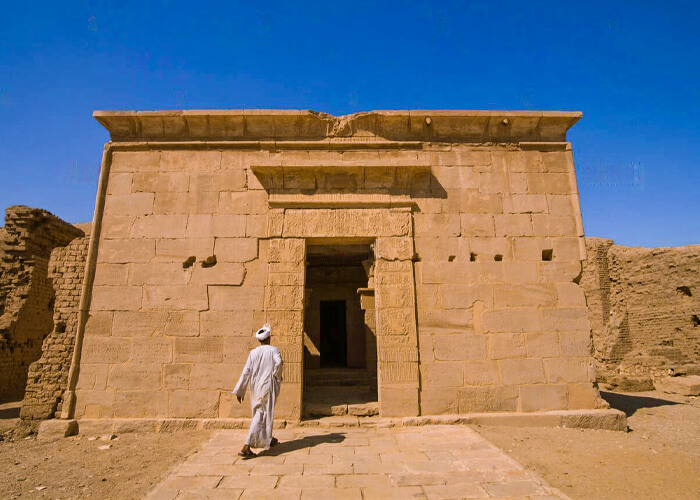The Ptolemaic Temple of Deir El-Medina
Even though The Ptolemaic Temple of Deir El-Medina Workman’s is not as impressive as the Valley of the Kings, many people who visit Luxor (which used to be called Thebes) stop by the village for a few minutes before going to the Valley of the Kings to see two or more tombs. Most people don’t notice the temple at the other end of the hamlet, but I think it’s very pretty and worth going to see. Even now, it’s still in great shape. It is also a shrine for the workers and their special needs.
Hathor is the main god of the temple, but Amun-Sokar-Osiris and Amun-Re-Osiris also have shrines there.
Temple Description
It is the most recent of many temples that have been built here since the village was first started. Its dimensions are 15 x 24 meters. It is in the northernmost part of the hamlet, next to the tombs of Senedjem and Anherkhau, and is surrounded by a 50-square-meter wall.
Rich Europeans who went on “grand tours” in the modern era went there often, so its walls are full of graffiti. In the 19th century, for example, there were tourists from Greece and Egypt, as well as tourists from Europe. A Christian group in Ethiopia called Blemyes even made a picture of a camel.
The Persians destroyed an older New Kingdom palace, and Ptolemy II and III rebuilt it. Ptolemy IV Philopater and many other Ptolemaic Kings built and decorated the current building on a rock bay to replace it. On the east wall of the enclosure, next to the door to the temple, a cult terrace was built. A stairway with a picture of Ramesses II stands in front of the temple.
Temple Description and Exterior walls
Even though the temple’s facade was simple, the forecourt and pronaos facades were connected in a unique way by columns with late-period papyrus capitals. The front of the pronaos, which rises on a step past the entrance hall, is held up by two composite columns.
Italicized the word “antis” in “antis.” The antae piers have columns of Hathor on three of their four sides. Pillars and piers are connected by screen barriers.
Behind the columns and piers is an offering hall with a typical temple staircase leading up to the roof. Hathor, the sun god’s daughter, was definitely worshiped up there. Small Hathor columns and a stone grill are on the side wall above the clerestory window on the staircase.
column. When you leave the hall for making offerings, you’ll see three separate shrines. In the right-hand sanctuary, which still has a lot of its original color, you can see a lot of the other gods and goddesses. It was made in honor of Amun-Re-Osiris. The entrance to the middle sanctuary, which is for Hathor, is decorated with a frieze of seven heads of Hathor.


